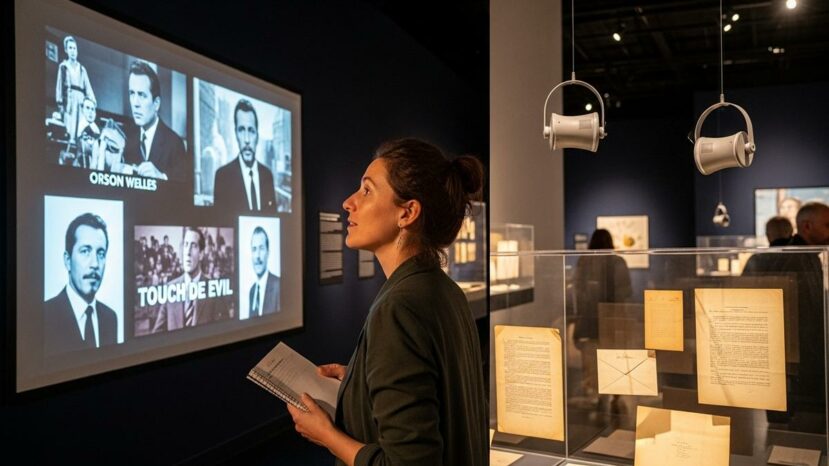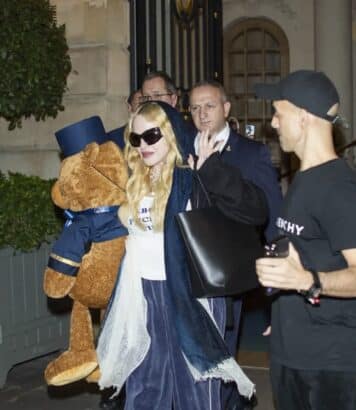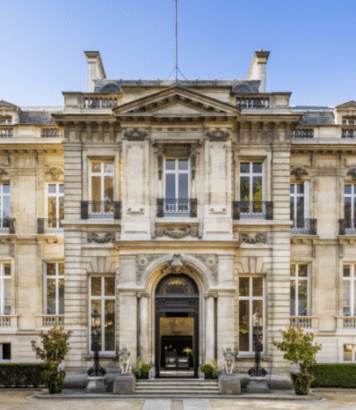Orson Welles at the Cinémathèque française: the major My Name Is Orson Welles exhibition opens in Paris

In Paris, the Cinémathèque française is devoting a major tribute exhibition to Orson Welles. The exhibition promises to be sensitive and well-documented, with rare archives, images and sounds. In this way, everyone can measure the filmmaker’s imprint on the creation of yesterday and today.
Why Orson Welles still fascinates
The filmmaker has marked the history of the medium with his freedom of tone and form. What’s more, his work blends theater, radio and cinema with unique ease. Here, the Cinémathèque française offers a chronological and thematic overview, accessible to all. Step by step, the public learns how an artist invents his own rules.
The title of the exhibition, “My Name is Orson Welles”, announces a direct face-to-face encounter with the work. Excerpts, photos from the shoot and preparatory materials are on display. As a result, creation can be read from a human perspective, from the first ideas to the finished film. Visitors build their own red thread, without unnecessary jargon.
The itinerary recalls familiar milestones, but also opens less expected doors. On the other hand, the scenography emphasizes gesture and voice, placing the artist at the center. This
“In Paris, the Cinémathèque celebrates a giant of the cinema, bringing his work to the eye and ear.
A living tribute to Orson Welles, designed for the visitor
Here, the material breathes and tells the story of a very real adventure. Documents are not static: they interact with projections and sounds. The labels are clear, with reference to dates and places. You’ll quickly get your bearings, even on a first visit.
Cycles of screenings or meetings often accompany this type of event. In addition, the mediation team is happy to answer any questions you may have. You can adapt the duration of your visit to suit your own pace and interests. Sometimes a break is in order, as the abundance of details deserves time to decant.
- Check the days and times before you come.
- Plan a large slot at the end of the day.
- Find out about any related projections.
- See bag and changing room instructions.
- Find the nearest transport access.
Understanding Orson Welles
His adventure began early on in the theater, then on radio with the Mercury Theatre. In 1938, his adaptation of The War of the Worlds was a milestone. His mastery of sound storytelling was to become a lasting signature. This experience influenced the rest of his career.
In Hollywood, Citizen Kane, released in 1941, transformed the visual language. The work on depth of field, conceived with Gregg Toland, remains a benchmark. What’s more, the film’s montage and fragmented narrative influenced several generations of filmmakers. Echoes of this can still be seen in today’s images.
Later, Touch of Evil(1958) and F for Fake(1973) reveal his experimental vein. As a result, the boundary between fiction and document becomes porous. The artist plays with voice-over, performance and mise en abyme. This boldness feeds the exhibition, which emphasizes the impetus for invention.
Useful resources to extend your Orson Welles visit
An exhibition catalog is often available, with iconography and essays. Public lectures and podcasts are also available for further study. The excerpts screened provide hints on how to watch the films again in the right conditions. In short, everyone can build their own critical toolbox.
Mediation devices help to link the works to their contexts. In addition, thematic focuses shed light on key collaborations, both in front of and behind the camera. This method gives substance to technical, aesthetic and political choices. It places Orson Welles in a living network of artists and producers.
Practical tips for a smooth experience
Arrive a few minutes early, especially on weekends and public holidays. And reserve a slot if the number of visitors is limited. An effective visit often lasts between
Alternate between reading and observing. This way, the richness of the images remains vivid, without visual fatigue. Take quick notes on the works that move you. Orson Welles is worth revisiting, then rereading in retrospect.
Families can prepare a list of scenes or objects to spot. As a result, everyone can participate and share their impressions of the outing. On the other hand, plan a flexible pace with younger children. On-site teams are happy to point out key points.





No comments
Post a comment
Always participate in accordance with the law and with respect for others.